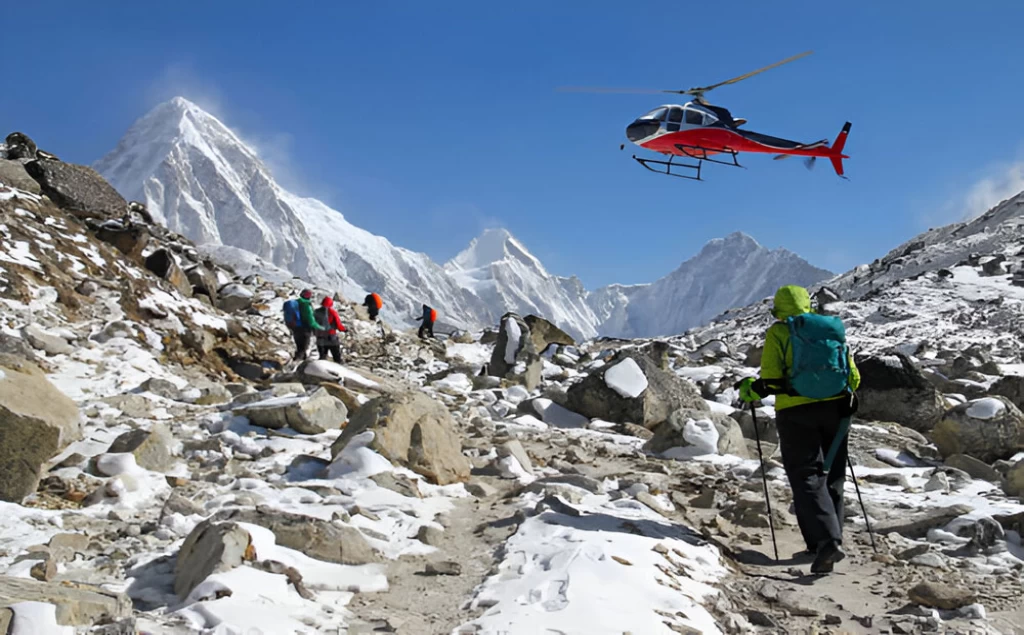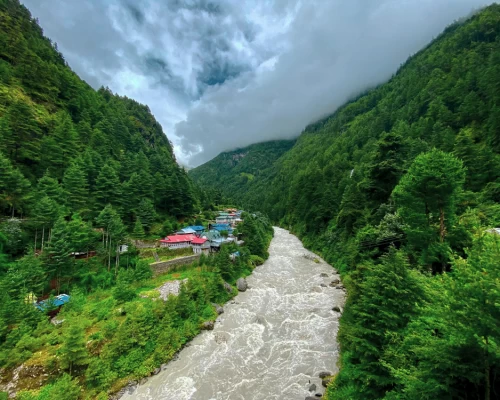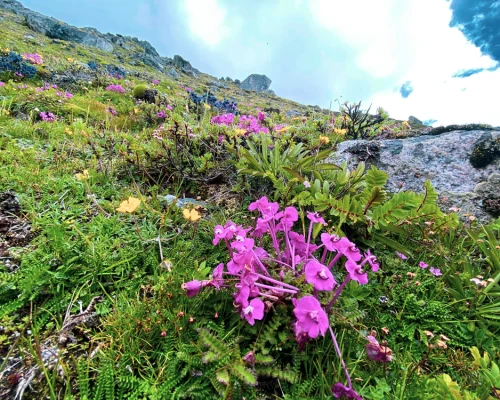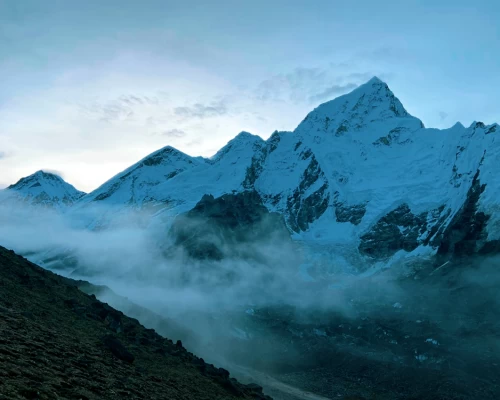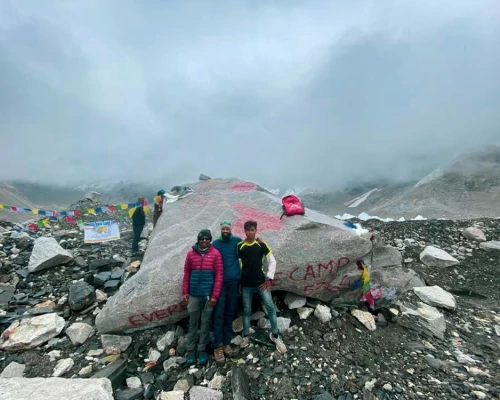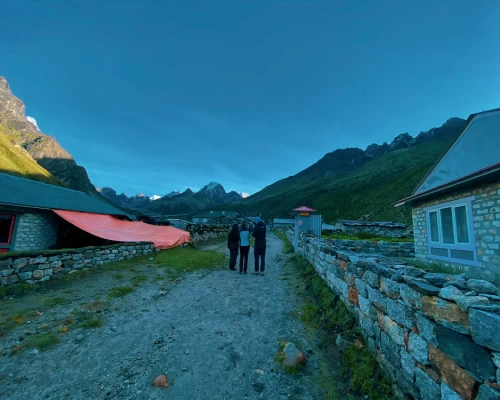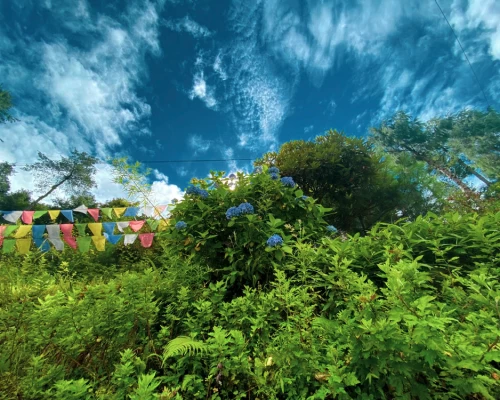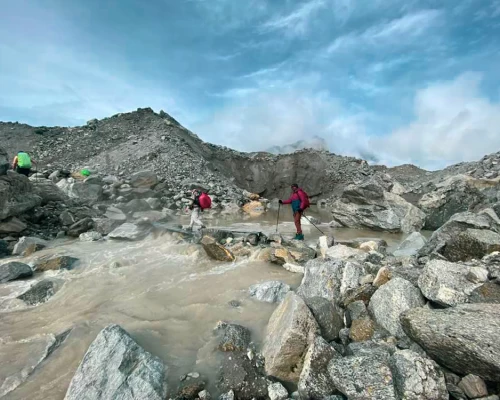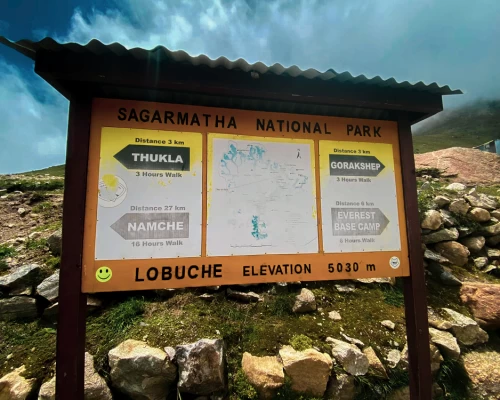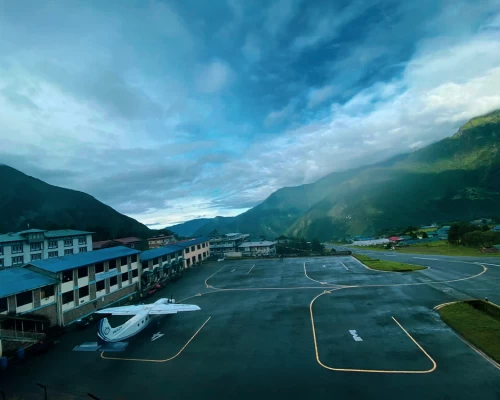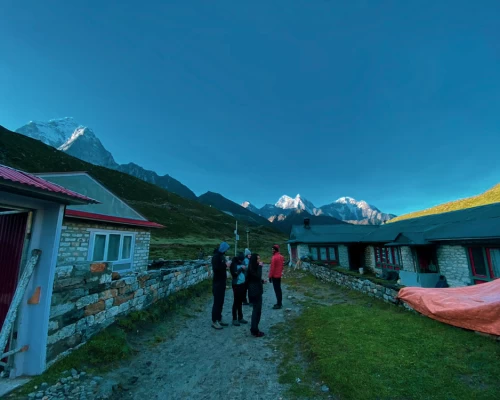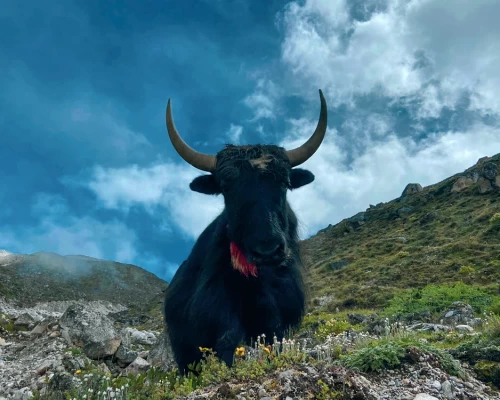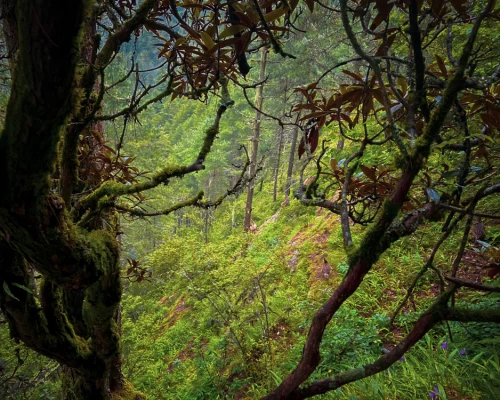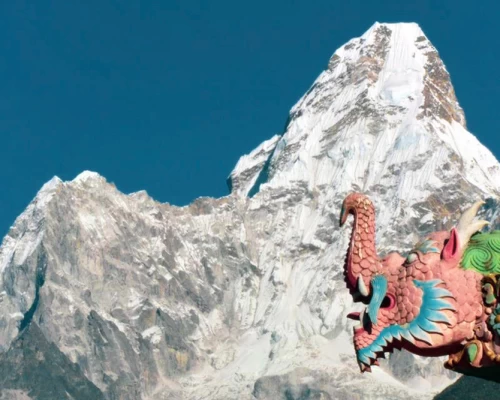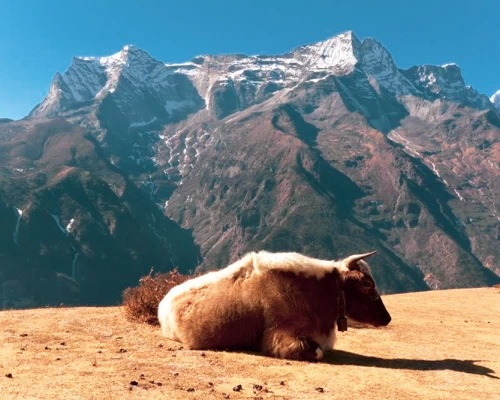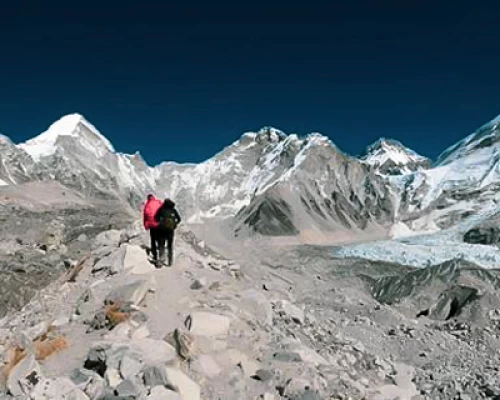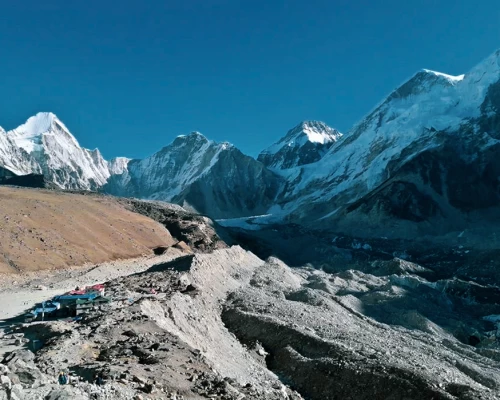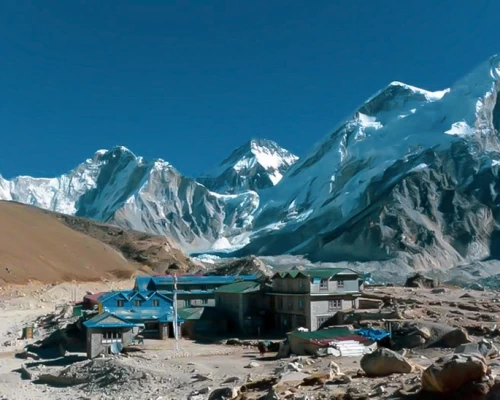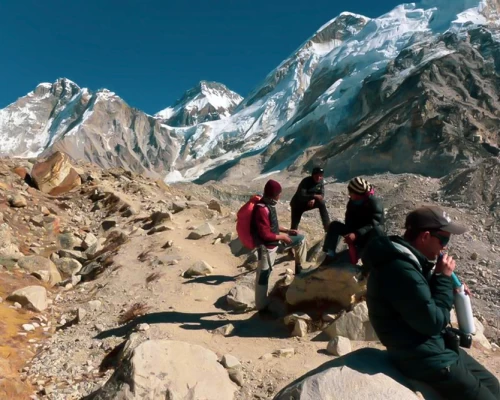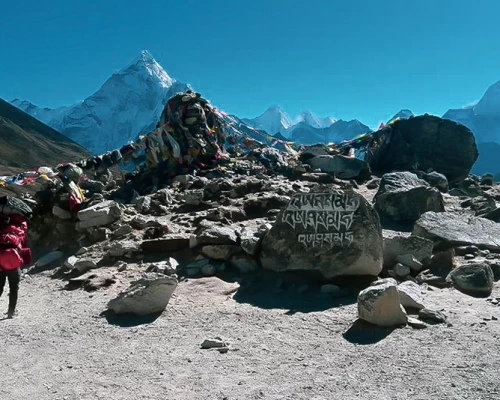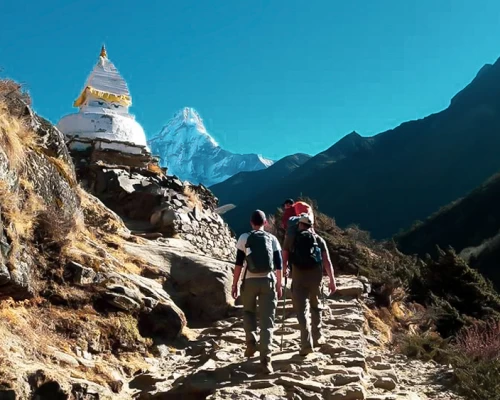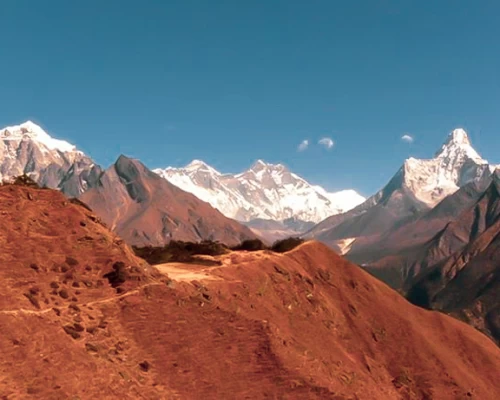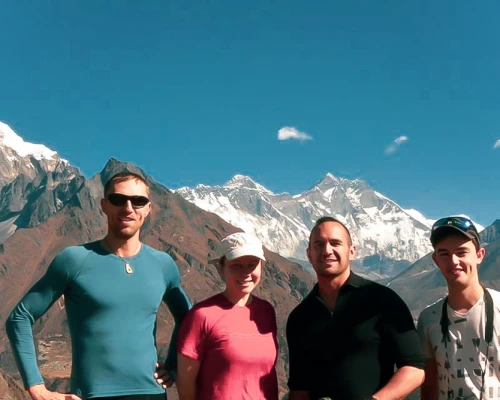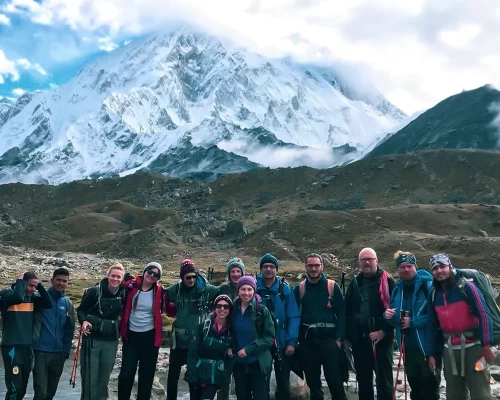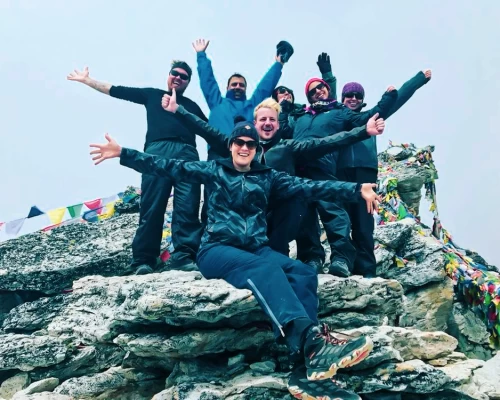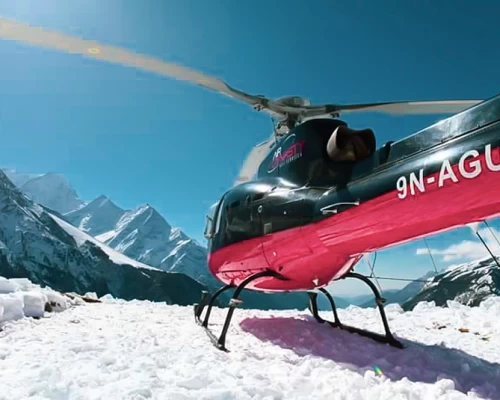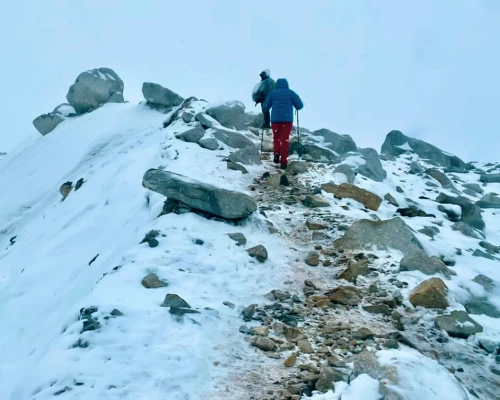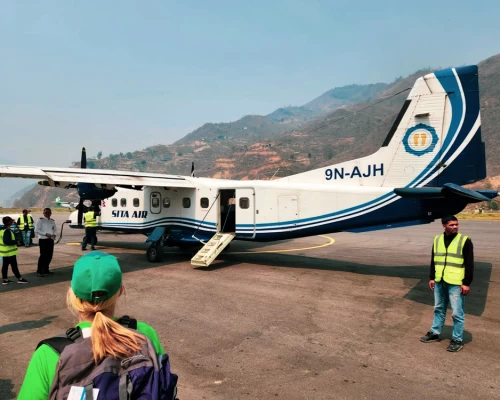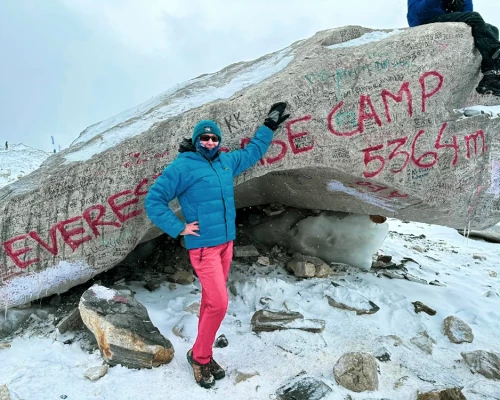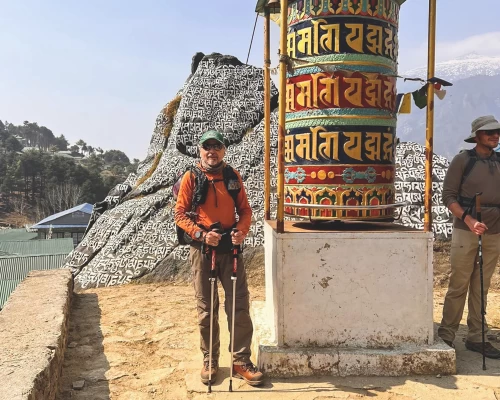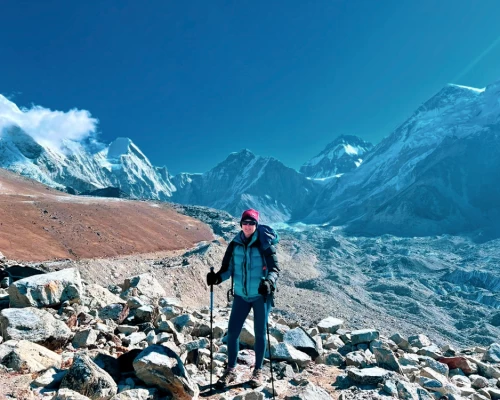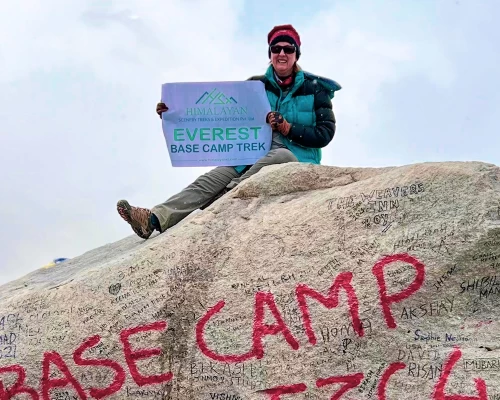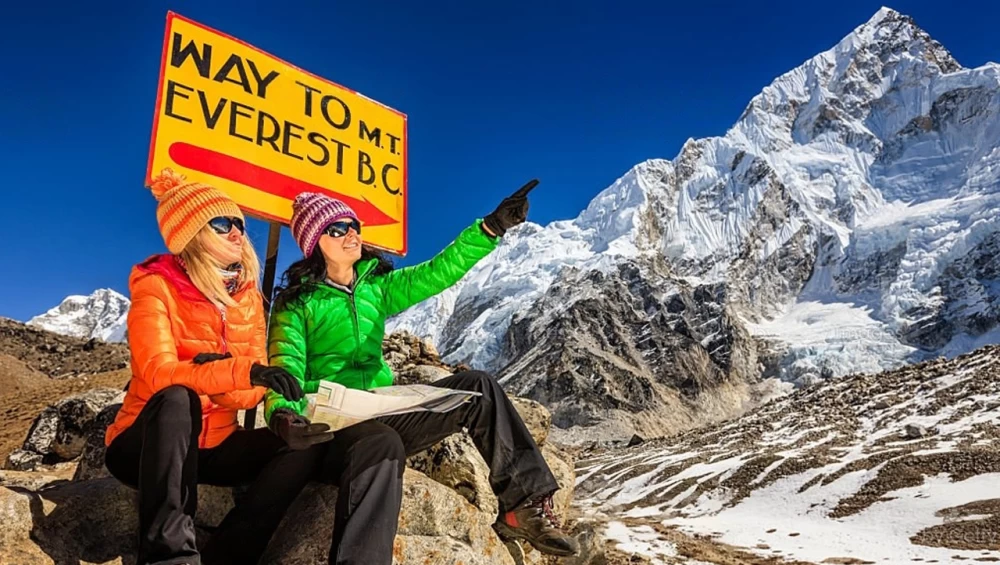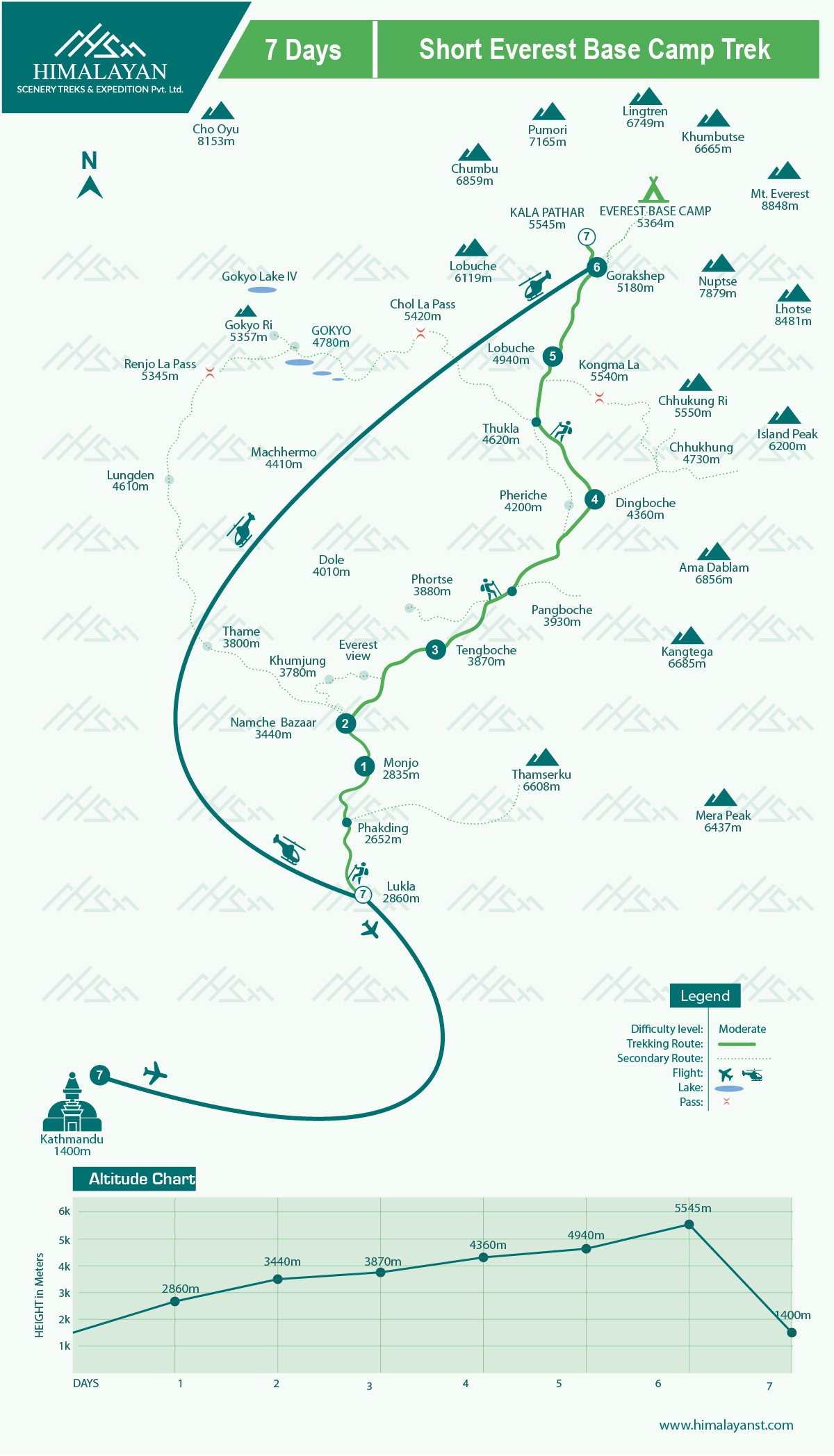Flora and Fauna of the Everest Region
When you venture into the Everest region, you'll encounter a rich tapestry of flora and fauna that call this rugged terrain home. The diverse ecosystem here is a marvel to explore.
Flora: Among the lush forests and alpine meadows, you'll find a variety of plant life. Keep an eye out for the vibrant rhododendron, Nepal's national flower, which blooms in shades of red, pink, and white during spring. Another highlight is the blue poppy, a strikingly rare and beautiful flower that's a true gem of this region. Look for the delicate edelweiss too, adding a touch of elegance to the landscape.
Fauna: As you journey through the Everest region, be on the lookout for some remarkable wildlife. Spot the elusive snow leopard, a magnificent predator adapted to the harsh mountain environment. The Himalayan tahr, a stocky herbivore with curved horns, often grazes along the rocky slopes. In the skies above, you might catch a glimpse of the Himalayan monal, a splendidly colorful pheasant that's also the national bird of Nepal.
The region is also home to the playful Himalayan marmots, who love to pop out of their burrows and curiously observe passersby. The red panda, a charismatic and endangered species, occasionally makes appearances, although spotting one is a true rarity.
Permits and Guides for Short Everest Base Camp Trekking
Permits
Embarking on the Short Everest Base Camp Trek requires two permits, which you can easily obtain at the Nepal Tourism Board in Kathmandu or at the entrance of Sagarmatha National Park in Monjo. These permits include the Khumbu Pasang Lhamu Rural Municipality Entrance permit and the Sagarmatha National Park Entry permit.
The good news is that our Everest Base Camp trek price covers the fees for both permits. You won't need to worry about any extra expenses, and our dedicated team takes care of securing the permits on your behalf, making your journey incredibly hassle-free.
Khumbu Pasang Lhamu Rural Municipality Entrance permit: NPR 2000 + VAT 13%
Sagarmatha National Park Entry permit: NPR 3000 + VAT 13%
Guides
In the past, solo trekking to Everest Base Camp was allowed, but since 2023, the rules have changed. No traveler can trek solo in Nepal, including the Everest Base Camp route. Having guides is now mandatory to ensure your safety and a smooth journey.
Guides play a vital role in securing suitable accommodations, delicious meals, and a seamless travel experience in the region. By having a guide, you minimize the risk of potential scams and ensure your journey is secure and comfortable.
Choosing Himalayan Scenery Treks and Expedition ensures you'll have the best-trained and experienced guides. Our guides are certified with Government-assigned Guide Licenses and have received specialized High-Altitude Training and First Aid certification. This means you're in safe hands, even in challenging conditions during your trek.
The best part is that you won't incur any extra charges for our guides. The cost of your guide is already included in your Trekking Cost, offering you peace of mind and a well-supported trekking experience.
Short Everest Base Camp Trek Difficulty
The Short Everest Base Camp Trek presents a wonderful blend of beauty and adventure, but it does come with its fair share of challenges that you need to be aware of before embarking on this journey.
Altitude variation is one of the foremost challenges you'll face. The highest point of the trek is the iconic Everest Base Camp itself, towering at an elevation of around 5,364 meters (17,598 feet) above sea level. As you ascend to these heights, the air becomes thinner, and altitude-related symptoms might manifest, requiring careful acclimatization.
The physical endurance required for the trek should not be underestimated. The total distance covered during the round trip is approximately 65 kilometers (40 miles). Throughout this journey, you'll traverse a range of terrains, from relatively easier paths to steeper sections, which might include rocky trails and even areas covered in snow.
Unlike some longer treks, the Short Everest Base Camp Trek doesn't allocate additional acclimatization days in places like Namche and Dingboche. This means that being well-acquainted with high altitudes is crucial for your comfort and safety.
Weather fluctuations are another challenge you should prepare for. Temperatures can change drastically, with daytime highs at the Everest Base Camp hovering around 10°C (50°F), while nighttime temperatures can plummet as low as -15°C (5°F).
Maintaining a reasonable level of physical fitness is highly recommended. While you don't need to be a professional athlete, regular cardiovascular exercises and some strength training can greatly aid in handling the demands of the trek.
The mental aspect of the journey is equally significant. Trekking involves long days and varying conditions, requiring mental stamina and a positive attitude to overcome obstacles and cherish the high points.
Having an experienced support team including knowledgeable guides is indispensable. They not only ensure your safety but also provide valuable insights and assistance throughout the trek.
Preparing for Short Everest Base Camp Trek
what you need to consider as you get ready for this adventure:
Physical Fitness:
The trek involves challenging trails and high altitudes. Building your physical endurance through regular exercise, including hiking and cardio workouts, will help you tackle the demanding terrain.
Altitude Acclimatization:
As this trek doesn't include extra acclimatization days, being familiar with high altitudes is crucial. If possible, gain experience in similar environments before taking on this journey.
Mental Readiness:
Prepare yourself mentally for the ups and downs of the trek. A positive mindset and determination will play a significant role in your journey's success.
Gear and Clothing:
Pack appropriately for changing weather conditions. Essential items include sturdy trekking boots, comfortable clothing, layers for warmth, a good-quality sleeping bag, and a waterproof jacket.
Personal Essentials:
Carry personal medications, toiletries, and items that ensure your comfort during the trek.
Cost Considerations:
Be aware of the added cost of the helicopter flight for the return journey. Factor this into your budget to avoid any surprises.
Training:
If you're new to trekking, consider undertaking training programs that help you understand the challenges and techniques needed for high-altitude trekking.
Health Check:
Consult a medical professional before your trek to ensure you're fit for the journey and discuss any specific health considerations.
Permits and Documentation: Ensure you have the required permits and necessary documents for the trek.
Flight Delay/Cancellation
For potential flight delays or cancellations, have some extra local currency to cover additional hotel and food costs during extended stays.
We're committed to making your trek experience smooth and enjoyable. Feel free to reach out if you have any questions or need assistance.
Book Your Trip
You can book this trip directly from here. Or contact us through:
E-mail: [email protected]
Contact: +977-9851083619 (WhatsApp) Ramkrishna Timalsina
You have many reasons that you choose shorter treks. First thing, you might not want to spend lots of time spending. Secondly, you might also have already visited the place and you're going for the second time. The third reason could be you are an experienced trekker with great physical and mental fitness. In all these reasons, the short treks are always the best. In the same way, Himalayan Scenery Treks and Expedition has brought Short Everest Base Camp Trek Package for you.
The short trek to Everest Base Camp will run for 7 days. This trek has one more upside to it, you don't have to return the same way back to Lukla on foot. We will provide a helicopter flight back up to Lukla. And from there the same Lukla flight will bring you back to Kathmandu.
There are many other ways to reach Everest Base Camp. You can reach Gokyo Lakes and reach the spot. You can also do some peak climbing like Mera Peak or Island Peak. Even you can choose Three High Passes or Two High Passes Treks along with this trip. These treks are quite famous alongside the base camp trekking because of their views and durations. And if you don't want to enroll up to base camp, then choose Short Everest View Trek that just goes up to Namche. And from here you will witness the best view of Mount Everest.
Your adventure will begin in Lukla and within 6 days you can reach Everest Base Camp. But you need to be greatly fit for this trek because it avoids any day of acclimatization. Usually, in the case of 12 days of trekking, there are two acclimatization stops; one in Namche and one in Dingboche. However, as we have less time and choosing this trek is only preferred by experienced trekkers, acclimatization is avoided. So, now let's look at what the trek generally will look like.
Your first day will begin with the flight to Lukla early in the morning from Kathmandu. However, sometimes the flights from Kathmandu are unavailable for several reasons. But don't worry. We can drive to Manthali from Kathmandu, early in the morning and then catch a Lukla flight from there. Once you reach Lukla, we will have a light lunch and start our hike to our day's first stop Monjo (2,835m./9,301ft.).
Monjo is also the site from where you need to have a permit for the trek. From here, the Everest region starts. You will enter Sagarmatha National Park as well as Khumbu Pasang Lhamu Rural Municipality from Monjo. So, your guide will buy you permits for both Park and Rural Municipality. We will rest our day here in Monjo.
The second stop is Namche on the second day. On this day you will not have to walk a lot. 3-4 hours of trekking will get you to the "Gateway of Everest", Namche. Before reaching Namche, there is a stop where you will rest for a while. And guess what? The first spotting of Mount Everest will be done from this viewpoint. And we ensure that you will never forget this.
The third day will be quite long. On this day we reach Tengboche. This place is quite famous for its Buddhist Monastery at the highest altitude in the world. The next day we hike towards Dingboche. Dingboche has really few hotels. So, in the peak seasons, you might have problems even getting rooms. So, better be prepared to sleep in tents, too. Now from Dingboche, our elevation is slowly gained. As we reach above 4,400 meters (14,435ft.). On our fifth day, we trek to Lobuche which lies at 4,940 meters (16,207ft.). From this region, you will rarely spot any plants that are higher or green. The wind is also quite fast here, and even low oxygen levels. You will, however, spot fewer hotels to stay at.
Our next stop is Gorakshep which is the last residential area in the highest altitude of the Everest region. Gorakshep sits at (5,364m./17,598ft.). Once we reach here from Lobuche, we will have a short hike to Everest Base Camp walking along the Khumbu Glacier. The Everest Base Camp keeps on changing several times due to Climate Change which is affecting the Khumbu Icefall and Khumbu Glacier that flows from it. However, you can easily get to the base camp on whose lamp the roof of the World sits. On the final day of the trek, you hike early in the morning to Kalapathhar (5,545m./18192ft.) and experience a beautiful sunrise rising from the side of Mount Everest. This view, we guarantee you that you will never forget in your 7 lifetimes.
After this journey, we head back to Gorakshep. As soon as the helicopter arrives to pick you up, we will head back to Lukla. In Lukla, our flight waits for us to get to Kathmandu. While returning, you will take enough time to recall all the memories and fun you had throughout the trip.
